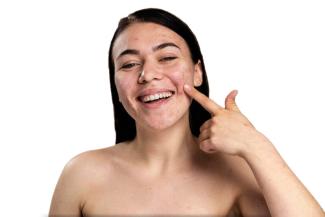
Hair loss is a common issue affecting millions of people worldwide, with causes ranging from genetic factors and hormonal imbalances to lifestyle choices and medical conditions. Addressing hair loss requires a thorough understanding of its underlying causes, effective strategies to reduce it, available treatments, and diagnostic tests to assess hair health. This extensive overview aims to cover these aspects comprehensively, providing a detailed guide for managing and understanding hair loss.
1. Causes of Hair Loss
Hair loss can occur due to various factors, often categorized into internal and external causes.
1.1 Genetic Causes
Androgenetic Alopecia (AGA):
- Male Pattern Baldness: This is the most common cause of hair loss in men, characterized by a gradual thinning of hair at the temples and crown of the head. It is genetically determined and linked to the hormone dihydrotestosterone (DHT), which affects hair follicles, shortening the growth phase and causing miniaturization.
- Female Pattern Baldness: Women also experience androgenetic alopecia, but the pattern is generally more diffuse, with thinning occurring over the entire scalp rather than in specific areas.
1.2 Hormonal Changes
- Pregnancy: Hormonal fluctuations during pregnancy can lead to increased hair growth. However, postpartum, when hormone levels normalize, many women experience temporary hair shedding known as postpartum alopecia.
- Menopause: As estrogen levels decline during menopause, women may experience increased hair thinning or loss.
- Thyroid Disorders: Both hypothyroidism (underactive thyroid) and hyperthyroidism (overactive thyroid) can disrupt hair growth cycles, leading to hair loss.
1.3 Stress
Telogen Effluvium:
- Chronic or acute stress can push a significant number of hair follicles into the telogen (resting) phase, leading to increased hair shedding. This condition is typically reversible once the stressor is removed, though it may take several months for hair regrowth.
1.4 Nutritional Deficiencies
- Iron Deficiency: Low levels of iron can lead to hair thinning and shedding. Iron is crucial for producing hemoglobin, which carries oxygen to hair follicles.
- Vitamin D Deficiency: Insufficient vitamin D levels have been linked to hair loss, as it plays a role in the hair growth cycle.
- Biotin: Although rare, biotin deficiency can cause hair thinning. Biotin supports hair health by aiding in the metabolism of fats, carbohydrates, and proteins.
- Zinc Deficiency: Zinc is essential for hair tissue growth and repair. A lack of zinc can result in hair loss.
1.5 Medications and Chemical Treatments
- Chemotherapy: Cancer treatments, such as chemotherapy, often result in temporary or permanent hair loss due to their impact on rapidly dividing cells.
- Medications: Certain medications, including antidepressants, blood thinners, and drugs for high blood pressure, can cause hair loss as a side effect.
1.6 Autoimmune Diseases
- Alopecia Areata: This condition occurs when the immune system mistakenly attacks hair follicles, leading to sudden hair loss in small, round patches. It can sometimes progress to total scalp hair loss (alopecia totalis) or complete body hair loss (alopecia universalis).
- Lupus: Lupus is an autoimmune disorder that can cause inflammation in various parts of the body, including the scalp, leading to hair loss.
1.7 Infections and Skin Conditions
- Tinea Capitis: This fungal infection of the scalp can cause hair loss, scalp itching, and redness.
- Psoriasis: Scalp psoriasis can lead to flaking, itching, and hair loss due to the inflammatory nature of the condition.
1.8 Physical Trauma and Scalp Conditions
- Traction Alopecia: This type of hair loss is caused by repeated pulling or tension on the hair, often due to hairstyles like tight braids or ponytails.
- Trichotillomania: This psychological disorder involves compulsively pulling out one’s hair, leading to noticeable hair loss.
1.9 Excessive Styling and Chemical Treatments
- Heat Damage: Frequent use of high-heat styling tools, such as hairdryers, flat irons, and curling wands, can weaken and damage hair, leading to breakage and thinning.
- Chemical Treatments: Regular coloring, perming, and relaxing can damage the hair shaft and follicles, causing hair loss.
2. Strategies to Reduce Hair Loss
Mitigating hair loss involves a combination of lifestyle adjustments, proper hair care, and potentially medical interventions.
2.1 Healthy Lifestyle
- Balanced Diet: Eating a diet rich in essential vitamins and minerals supports overall hair health. Key nutrients include iron, vitamin D, biotin, and omega-3 fatty acids. Incorporate foods like leafy greens, nuts, seeds, fish, and lean meats.
- Hydration: Drinking sufficient water ensures proper hydration, which is crucial for maintaining healthy hair.
- Regular Exercise: Physical activity promotes healthy blood circulation, which can positively impact hair follicles.
2.2 Proper Hair Care
- Mild Shampoos and Conditioners: Use hair care products suitable for your hair type and avoid harsh chemicals. Look for shampoos and conditioners with nourishing ingredients like keratin, biotin, and natural oils.
- Avoid Over-Styling: Limit the use of heat styling tools and avoid hairstyles that put excessive tension on the hair.
- Gentle Drying: Pat hair dry with a towel instead of rubbing it, and avoid excessive brushing when hair is wet to prevent breakage.
2.3 Stress Management
- Relaxation Techniques: Engage in stress-reducing activities such as meditation, yoga, or deep-breathing exercises to help manage stress levels.
- Adequate Sleep: Ensure you get enough quality sleep, as it is essential for overall health and hair restoration.
2.4 Regular Hair Washing
- Appropriate Washing Frequency: Wash your hair regularly to keep the scalp clean and remove excess oil and debris. Avoid over-washing, which can strip natural oils.
2.5 Scalp Massage
- Boost Blood Circulation: Regularly massaging the scalp can enhance blood flow to hair follicles, potentially promoting hair growth.
3. Treatment Options for Hair Loss
Treatment for hair loss depends on the underlying cause and can include a range of medical, surgical, and non-surgical options.
3.1 Pharmacological Treatments
- Minoxidil: An over-the-counter topical treatment that is applied directly to the scalp. It helps to stimulate hair growth by increasing blood flow to hair follicles. It is used for both androgenetic alopecia and telogen effluvium.
- Finasteride: A prescription oral medication that inhibits the enzyme 5-alpha reductase, reducing levels of DHT. It is primarily used for male pattern baldness but is less commonly prescribed for women due to potential side effects.
3.2 Surgical Treatments
- Hair Transplantation: Involves moving hair follicles from a donor site (usually the back or sides of the scalp) to balding areas. Common techniques include Follicular Unit Transplantation (FUT) and Follicular Unit Extraction (FUE).
- Scalp Reduction Surgery: A procedure where sections of the bald scalp are surgically removed and the remaining scalp is stretched and stitched together.
3.3 Platelet-Rich Plasma (PRP) Therapy
- PRP Treatment: Involves drawing a small amount of blood, processing it to concentrate platelets, and injecting it into the scalp. The growth factors in the platelets may stimulate hair follicles and enhance hair growth.
3.4 Low-Level Laser Therapy (LLLT)
- Laser Treatment: Uses low-level lasers to improve blood circulation and stimulate hair follicles. This non-invasive treatment is used to promote hair growth and is often used in conjunction with other treatments.
3.5 Supplements and Vitamins
- Dietary Supplements: Biotin, zinc, iron, and vitamin D supplements can support hair health. Always consult with a healthcare provider before starting any new supplements.
4. Diagnostic Tests for Healthy Hair
Accurate diagnosis of hair loss involves several tests to determine the underlying cause and guide appropriate treatment.
4.1 Blood Tests
- Nutritional Assessment: Blood tests can identify deficiencies in iron, vitamin D, biotin, and other nutrients that might contribute to hair loss.
- Hormonal Testing: Evaluates levels of hormones such as thyroid hormones, estrogen, testosterone, and DHT to identify potential hormonal imbalances.
4.2 Scalp Biopsy
- Biopsy Procedure: Involves taking a small sample of scalp tissue to analyze under a microscope. This can help diagnose conditions such as autoimmune disorders or inflammatory diseases affecting the hair follicles.
4.3 Hair Pull Test
- Hair Pull Test: A diagnostic test where a small number of hairs are gently pulled to determine how many hairs come out. It helps assess the rate and type of hair loss.
4.4 Trichogram
- Trichogram Analysis: Involves examining hair samples under a microscope to evaluate the hair growth cycle and identify abnormalities.
4.5 Hair Analysis
- Microscopic Examination: Analyzing hair samples for signs of damage, disease, or other issues that might be affecting hair health.
5. Understanding the Cause of Hair Loss
To determine the cause of hair loss, consider the following steps:
- Medical History: Review personal and family medical history, including any recent illnesses, surgeries, or significant life events that might impact hair health.
- Lifestyle Assessment: Evaluate lifestyle factors such as diet, stress levels, and hair care practices.
- Consult a Specialist: Seek advice from a dermatologist or trichologist for a thorough evaluation and personalized recommendations.
6. Finding the Right Solution
Once the cause of hair loss is identified, choose the most appropriate solution based on the diagnosis:
- Lifestyle Modifications: Implement dietary changes, stress management techniques, and proper hair care practices.
- Medical Treatments: Consider pharmacological treatments, PRP therapy, or laser therapy as recommended by a healthcare provider.
- Surgical Options: Explore hair transplantation or scalp reduction surgery if non-surgical methods are insufficient.
Hair loss is a multifaceted issue with various causes, ranging from genetic predispositions and hormonal imbalances to nutritional deficiencies and external factors. Understanding these causes, implementing strategies to reduce hair loss, exploring available treatments, and undergoing appropriate diagnostic tests are crucial steps in managing this condition. By adopting a comprehensive approach, including lifestyle changes, medical treatments, and professional consultations, individuals can effectively address hair loss and work towards healthier, fuller hair.






